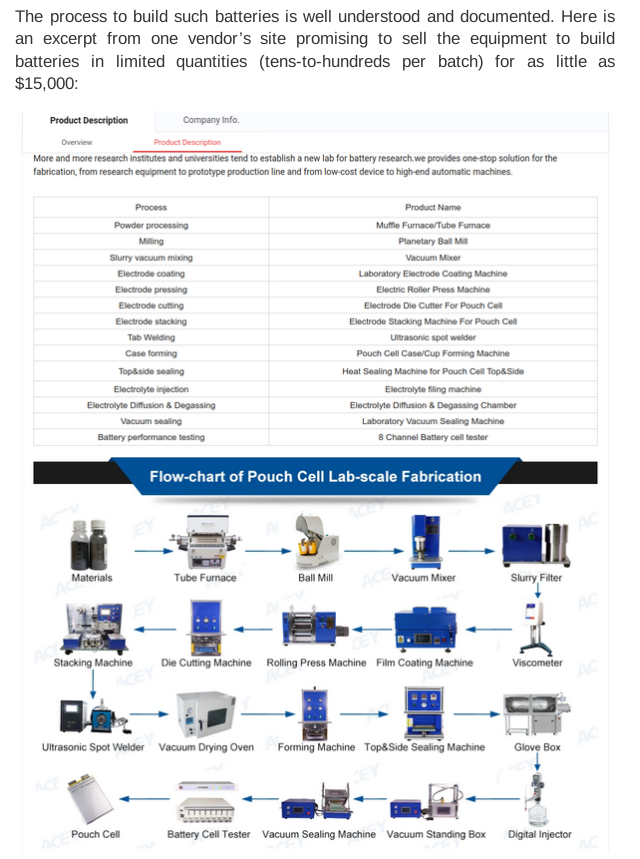edit: after 20 comments, i’m adding a post description here, since most of the commenters so far appear not to be reading the article:
This is about how surprisingly cheap it is (eg $15,000) to buy a complete production line to be able to manufacture batteries with a layer of nearly-undetectable explosives inside of them, which can be triggered by off-the-shelf devices with only their firmware modified.



Lithium burns intensely but it doesn’t explode. An electric car can burn for a long time, but they don’t explode. One of the comments says so
It shouldn’t be undetectable. Throw a device from s series into a fire as a spot check and if it burns it’s ok, if it explodes give the entire series to your enemy’s kids to play with.
Most high explosives burn unless detonated properly.
This is really basic stuff. I don’t think you should be out and about giving people advice about handling (potential) explosives.
I am not an explosives expert, but I’ve seen enough YouTube videos about explosives to know that not all explosives explode in fire. Some are incredibly stable at extreme conditions right up until deliberately triggered. It all depends on the type of explosives.
There may still be ways to detect them, but it’s not necessarily going to be that simple.
Yes that’s correct high explosives require a starter explosive. However this starter explosive would also have to be incorporated into the device and the starter explosive is triggered by a spark or a fire. So throwing it in a fire would still work as a test you’d just have to make sure it totally melted before concluding anything.
They don’t necessarily require a starter explosive, certain types do of course. It’s more about overcoming the initial energy required, for example the arc from an electric arc lighter could probably overcome that requirement in a lot of scenarios.
The type of explosive used in this is not a high explosive. If put in a fire it would have exploded
Heads up, I don’t think C4 explodes when burned. I think it requires electronic detonation or a blasting cap.
It’s right next to or in a high intensity lithium fire, not just a normal little flame. That should alter the equation somewhat.
It’s possible that it could, but could also not. I’d be curious to find out what would happen but unfortunately the feds won’t let me run tests on semtex because I don’t have “the proper permits.” Jerks.
Maybe we’ll see someone with a license to manufacture destructive devices, like OrdinanceLab on YT, do a video on it (fingers crossed!)
It depends on the explosive, C-4, and I think all plastic explosives, will burn in a fire.
PETN was put into the batteries
https://en.wikipedia.org/wiki/Pentaerythritol_tetranitrate
Yeah that has getting put on a list written all over it …
Did you read the article? It sounds like you didn’t.
Are you able to say anything but that?
Not capable of saying anything else.